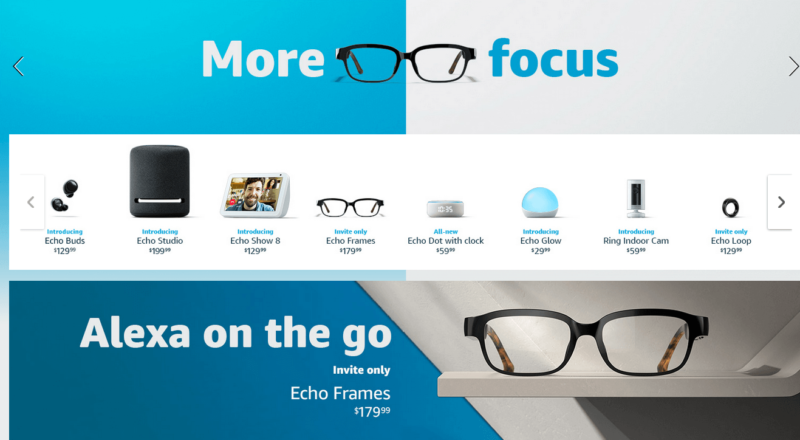Analysis: New Amazon Echo wearables are more bad news for advertising
Transactions are a better fit than ads for the next generation of connected devices.

Earlier this week Amazon introduced new Echo and Alexa-powered devices at its Devices & Services Event in Seattle. They include a new Echo and Echo Dot, a new smart display a high-end Echo speaker, Alex-powered ear buds, a smart ring, smart glasses and several others.
Most interesting to me are the Alexa wearables and what they suggest for the future of advertising and marketing on smart, connected devices without screens.
New screenless devices. Amazon’s AirPods competitor, Echo Buds, are wireless earbuds with Alexa built in ($129.99). Echo Frames are smart glasses with Alexa ($179.99). The Echo Loop is an Alexa-powered smart ring ($129.99). Frames do not have any visual display (unlike Google Glass); instead it’s a purely auditory experience. They can also take prescription lenses and look (mostly) like normal frames.
We don’t know yet how well any of these wearables perform or will sell but they’re priced pretty competitively. And if past is prologue, Amazon will probably do some discounting for holiday shopping later this year.
New Echo/Alexa devices introduced this week

The opportunity for smart speakers as an advertising channel has yet to materialize, despite industry expectations and the popularity of the devices themselves among consumers. Some estimates suggest there may be as many as 100 million smart speakers and displays in U.S. households. While Amazon continues to diversify its lineup of smart devices, Google is betting strongly on smart displays (e.g., Google Next Hub Max).
Ads vs. transactions. Smart displays allow for screen-based search, display and video ads similar to those on PCs and smartphones. But screenless smart speakers do not. They are better suited to audio or radio-style ads or sponsored content. That’s a logical model but it hasn’t shown up at any level of scale.
Echo Buds, Frames and Loop are even less likely to see advertising than smart speakers – unless brief sponsor mentions are inserted before Alexa answers or content. I suspect that’s highly unlikely and would be shunned by consumers.
Still time to figure out the revenue model. While Amazon and Google have plenty of time to figure out the smart device “business model” (beyond hardware sales), it’s less and less likely to be advertising. By contrast, transactions are better positioned to become the monetization engine for virtual assistant-powered devices without screens. There’s better alignment between transaction-based revenue and consumer utility.
Apple Watch, the best selling wearable in the market, is not an advertising platform, although it arguably is a brand marketing channel if app distribution is included in that definition. Indeed, we may eventually see an Alexa-powered smartwatch. But with Frames, Buds and Loop, Amazon may taking the market in new directions and further away from traditional screens — and advertising.
Why we should care. As we move away from two primary screens and into a world of “ambient computing,” with numerous device categories, marketers need to think more broadly about delivering value to consumers/customers and how to align that with their brand and marketing objectives. Some device categories and channels are going to be ad-friendly and some simply won’t be.
Contributing authors are invited to create content for MarTech and are chosen for their expertise and contribution to the search community. Our contributors work under the oversight of the editorial staff and contributions are checked for quality and relevance to our readers. MarTech is owned by Semrush. Contributor was not asked to make any direct or indirect mentions of Semrush. The opinions they express are their own.
Related stories